The Opioid Crisis in North Carolina: A Deep Dive into Recent Statistics

The opioid crisis has left a devastating imprint on communities across the United States. The state of North Carolina is no exception. With the widespread availability of prescription opioids, illicit fentanyl and heroin, the state has seen a dramatic increase in opioid misuse, overdose deaths and addiction rates. Understanding the severity of the crisis requires looking at the most recent data available, which paints a sobering picture of the state’s struggle. In this blog, we’ll explore the latest statistics on opioid use in North Carolina and highlight the steps being taken to address the epidemic while also discussing how Pyramid Healthcare plays a critical role in the path to recovery.
Statistics on Opioid Use in North Carolina
North Carolina has been hit particularly hard by the opioid epidemic, with opioid use and overdose deaths on the rise in recent years. According to the North Carolina Department of Health and Human Services (NCDHHS), more than 28,000 North Carolinians died from opioid-related overdoses between 2000 and 2021. A staggering increase in deaths has occurred in the last few years, driven mainly by the availability of synthetic opioids like fentanyl.
In 2022, the state saw over 4,000 overdose deaths, with opioids being a significant factor in about 80 percent of these fatalities. Synthetic opioids, particularly fentanyl, were involved in 77 percent of all overdose deaths in 2021, and the trend shows no signs of slowing. Fentanyl, a synthetic opioid that is 50 to 100 times stronger than morphine, is being mixed with other drugs like heroin and cocaine, often without the user’s knowledge, leading to an alarming number of accidental overdoses.
The Toll on Communities
The impact of the opioid epidemic in North Carolina is not only reflected in the staggering overdose statistics but also in the strain on public health, law enforcement and community services. The misuse of prescription opioids has affected people from all walks of life, transcending socioeconomic backgrounds and disproportionately impacting rural communities.
For instance, in rural areas of North Carolina like Robeson, McDowell and Wilkes counties, the overdose death rates are among the highest in the state. These areas often lack access to healthcare and addiction treatment services, making it even more challenging to combat opioid misuse. This pattern highlights the need for more widespread availability of addiction treatment centers, especially in underserved regions.
The Growing Need for Addiction Treatment
As opioid use and addiction rates climb, the demand for addiction treatment in North Carolina has grown significantly. Substance use disorder (SUD) treatment is essential to curb the opioid crisis and prevent further loss of life. Unfortunately, access to treatment is still a significant barrier for many individuals struggling with opioid addiction. In 2022, it was estimated that only one in 10 people who needed help for substance use disorders received treatment, a statistic that reflects both the stigma surrounding addiction and the lack of available services.
The opioid epidemic in North Carolina has spurred the state government and local organizations to increase their efforts in combating the crisis. Programs like the Opioid Action Plan, launched by NCDHHS in 2017, have focused on preventing opioid misuse, reducing the number of overdose deaths and expanding access to treatment and recovery services. These initiatives are crucial, but many individuals will continue to fall through the cracks without adequate resources and expanded treatment facilities.
Steps Being Taken to Address the Crisis
In response to the opioid epidemic, North Carolina has implemented various measures to combat opioid misuse and overdoses. The state’s Opioid Action Plan 3.0, launched in 2021, builds on previous efforts by focusing on prevention, increasing access to naloxone (a life-saving medication that reverses opioid overdoses) and expanding treatment options for individuals with opioid use disorder (OUD).
Additionally, North Carolina has focused on reducing the over-prescription of opioids by encouraging healthcare providers to follow safer prescribing practices. Since 2017, the number of opioid prescriptions written by healthcare providers in the state has decreased by nearly 20%, according to NCDHHS. This reduction in prescriptions is a positive step toward preventing future cases of opioid misuse, though it does little to address the immediate needs of those already battling addiction.
Pyramid Healthcare: A Path to Recovery
For those struggling with opioid addiction, finding the proper treatment is critical to recovery. Pyramid Healthcare in North Carolina offers a wide range of services designed to help individuals overcome opioid addiction and regain control of their lives.
Pyramid Healthcare’s comprehensive treatment approach includes medical detoxification, inpatient and outpatient rehabilitation programs, medication-assisted treatment (MAT) and therapy services tailored to each individual’s needs. With a focus on evidence-based treatment and compassionate care, Pyramid Healthcare is committed to helping people recover from opioid use disorder and reduce the impact of the opioid epidemic in North Carolina.
Taking Action Against the Opioid Epidemic
The opioid crisis in North Carolina continues to claim lives and devastate communities. As the state grapples with high rates of opioid addiction and overdose deaths, the need for accessible, effective treatment has never been more urgent. Statistics on opioid use in North Carolina illustrate the extent of the epidemic and the pressing need for comprehensive solutions.
If you or a loved one are struggling with opioid addiction, Pyramid Healthcare can provide the support and treatment needed to start the journey to recovery. By addressing the crisis with accessible addiction treatment services, we can work together to reduce the impact of the opioid epidemic on North Carolina communities.
The opioid crisis has left a devastating imprint on communities across the United States. The state of North Carolina is no exception. With the widespread availability of prescription opioids, illicit fentanyl and heroin, the state has seen a dramatic increase in opioid misuse, overdose deaths and addiction rates. Understanding the severity of the crisis requires looking at the most recent data available, which paints a sobering picture of the state’s struggle. In this blog, we’ll explore the latest statistics on opioid use in North Carolina and highlight the steps being taken to address the epidemic while also discussing how Pyramid Healthcare plays a critical role in the path to recovery.
Statistics on Opioid Use in North Carolina
North Carolina has been hit particularly hard by the opioid epidemic, with opioid use and overdose deaths on the rise in recent years. According to the North Carolina Department of Health and Human Services (NCDHHS), more than 28,000 North Carolinians died from opioid-related overdoses between 2000 and 2021. A staggering increase in deaths has occurred in the last few years, driven mainly by the availability of synthetic opioids like fentanyl.
In 2022, the state saw over 4,000 overdose deaths, with opioids being a significant factor in about 80 percent of these fatalities. Synthetic opioids, particularly fentanyl, were involved in 77 percent of all overdose deaths in 2021, and the trend shows no signs of slowing. Fentanyl, a synthetic opioid that is 50 to 100 times stronger than morphine, is being mixed with other drugs like heroin and cocaine, often without the user’s knowledge, leading to an alarming number of accidental overdoses.
The Toll on Communities
The impact of the opioid epidemic in North Carolina is not only reflected in the staggering overdose statistics but also in the strain on public health, law enforcement and community services. The misuse of prescription opioids has affected people from all walks of life, transcending socioeconomic backgrounds and disproportionately impacting rural communities.
For instance, in rural areas of North Carolina like Robeson, McDowell and Wilkes counties, the overdose death rates are among the highest in the state. These areas often lack access to healthcare and addiction treatment services, making it even more challenging to combat opioid misuse. This pattern highlights the need for more widespread availability of addiction treatment centers, especially in underserved regions.
The Growing Need for Addiction Treatment
As opioid use and addiction rates climb, the demand for addiction treatment in North Carolina has grown significantly. Substance use disorder (SUD) treatment is essential to curb the opioid crisis and prevent further loss of life. Unfortunately, access to treatment is still a significant barrier for many individuals struggling with opioid addiction. In 2022, it was estimated that only one in 10 people who needed help for substance use disorders received treatment, a statistic that reflects both the stigma surrounding addiction and the lack of available services.
The opioid epidemic in North Carolina has spurred the state government and local organizations to increase their efforts in combating the crisis. Programs like the Opioid Action Plan, launched by NCDHHS in 2017, have focused on preventing opioid misuse, reducing the number of overdose deaths and expanding access to treatment and recovery services. These initiatives are crucial, but many individuals will continue to fall through the cracks without adequate resources and expanded treatment facilities.
Steps Being Taken to Address the Crisis
In response to the opioid epidemic, North Carolina has implemented various measures to combat opioid misuse and overdoses. The state’s Opioid Action Plan 3.0, launched in 2021, builds on previous efforts by focusing on prevention, increasing access to naloxone (a life-saving medication that reverses opioid overdoses) and expanding treatment options for individuals with opioid use disorder (OUD).
Additionally, North Carolina has focused on reducing the over-prescription of opioids by encouraging healthcare providers to follow safer prescribing practices. Since 2017, the number of opioid prescriptions written by healthcare providers in the state has decreased by nearly 20%, according to NCDHHS. This reduction in prescriptions is a positive step toward preventing future cases of opioid misuse, though it does little to address the immediate needs of those already battling addiction.
Pyramid Healthcare: A Path to Recovery
For those struggling with opioid addiction, finding the proper treatment is critical to recovery. Pyramid Healthcare in North Carolina offers a wide range of services designed to help individuals overcome opioid addiction and regain control of their lives.
Pyramid Healthcare’s comprehensive treatment approach includes medical detoxification, inpatient and outpatient rehabilitation programs, medication-assisted treatment (MAT) and therapy services tailored to each individual’s needs. With a focus on evidence-based treatment and compassionate care, Pyramid Healthcare is committed to helping people recover from opioid use disorder and reduce the impact of the opioid epidemic in North Carolina.
Taking Action Against the Opioid Epidemic
The opioid crisis in North Carolina continues to claim lives and devastate communities. As the state grapples with high rates of opioid addiction and overdose deaths, the need for accessible, effective treatment has never been more urgent. Statistics on opioid use in North Carolina illustrate the extent of the epidemic and the pressing need for comprehensive solutions.
If you or a loved one are struggling with opioid addiction, Pyramid Healthcare can provide the support and treatment needed to start the journey to recovery. By addressing the crisis with accessible addiction treatment services, we can work together to reduce the impact of the opioid epidemic on North Carolina communities.







